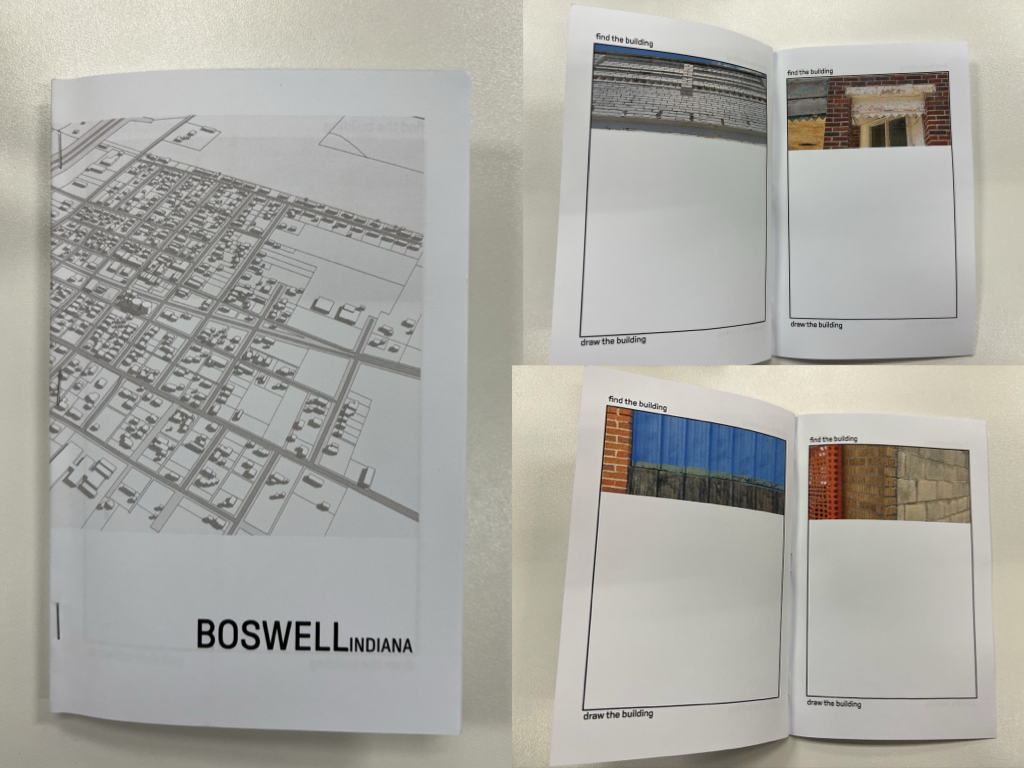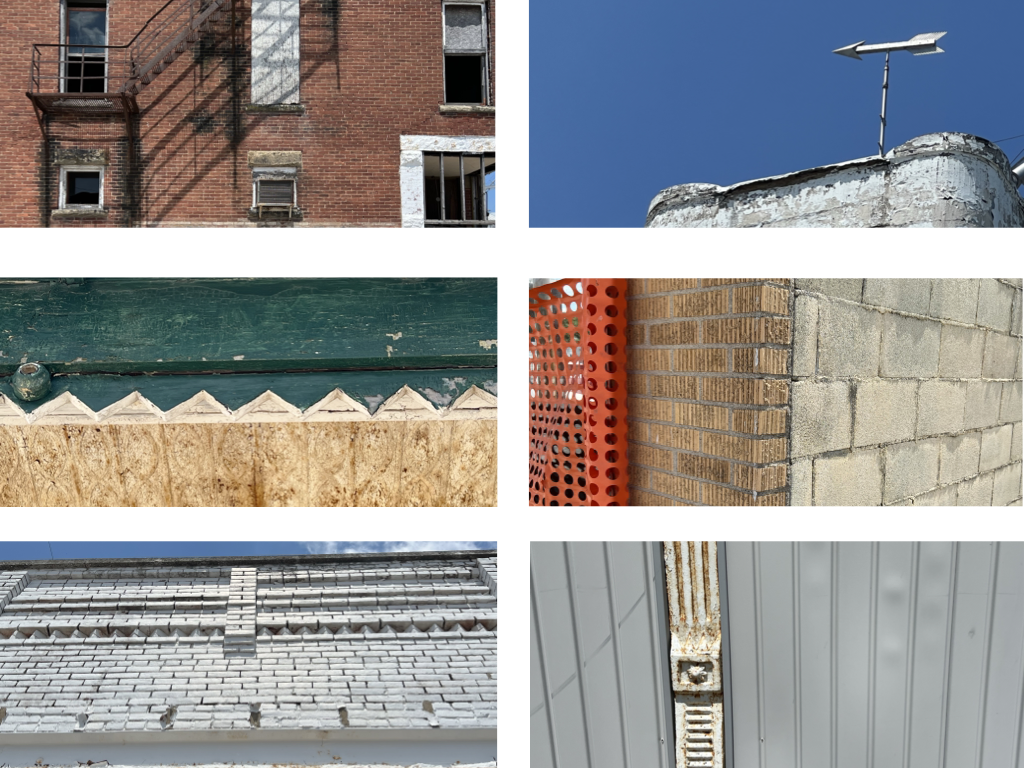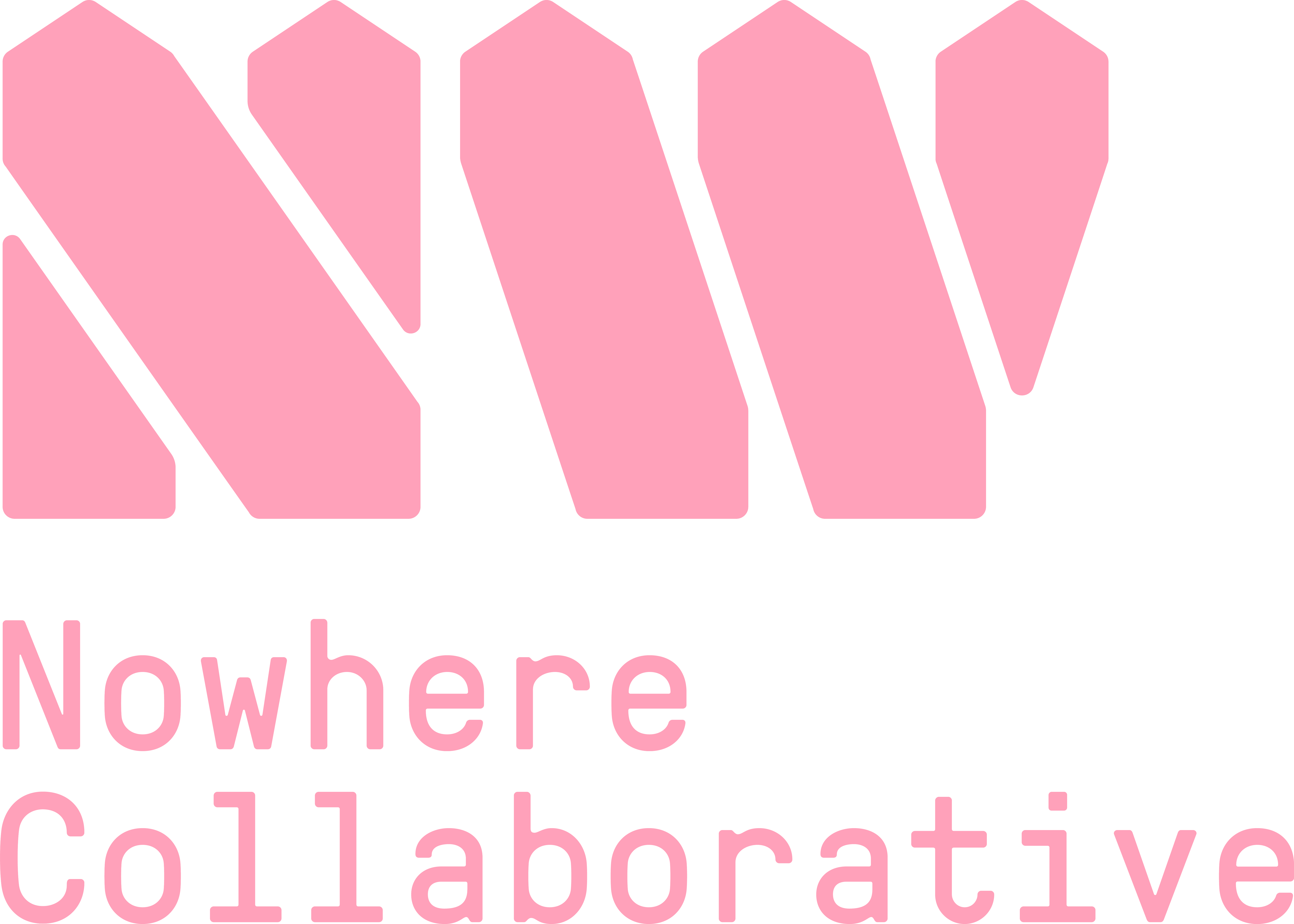Location:
Chicago Architecture Biennial - SHIFT Architecture in Times of Radical Change
Common Chicago Exhibit at MAS Context
Chicago, IL
SNOW FENCE explores the social impacts that result from the re-contextualized design and placement of a visible infrastructural element.
Chicago has a bold tradition of modifying or controlling nature through infrastructure that is mainly unseen. Chicago literally raised the city to address plumbing drainage issues, reversed the flow of the Chicago river for sanitation, and built deep tunnels to collect and divert excess storm water.
Unlike these infrastructure projects in Chicago, SNOW FENCE is designed to be seen and designed for interaction.
Common Chicago Exhibit at MAS Context
Chicago, IL
SNOW FENCE explores the social impacts that result from the re-contextualized design and placement of a visible infrastructural element.
Chicago has a bold tradition of modifying or controlling nature through infrastructure that is mainly unseen. Chicago literally raised the city to address plumbing drainage issues, reversed the flow of the Chicago river for sanitation, and built deep tunnels to collect and divert excess storm water.
Unlike these infrastructure projects in Chicago, SNOW FENCE is designed to be seen and designed for interaction.

The consequences of SNOW FENCE on natural and human forces will be examined at various scales, thicknesses, materials, and permanence. The snow fence acknowledges the historical impact of wind on the city - both natural winds originating from the lake and wind vortices created by skyscrapers and buildings. The snow fence reimagines landscapes during climate change. The snow fence may align with or disrupt the Chicago street grid. The snow fence may follow a linear path or may break apart to create eddies or drifts of focal points. The snow fence may become a passageway to collect community ephemera. The snow fence may invoke historical references to the original prairie landscape - now transformed in the urban context.
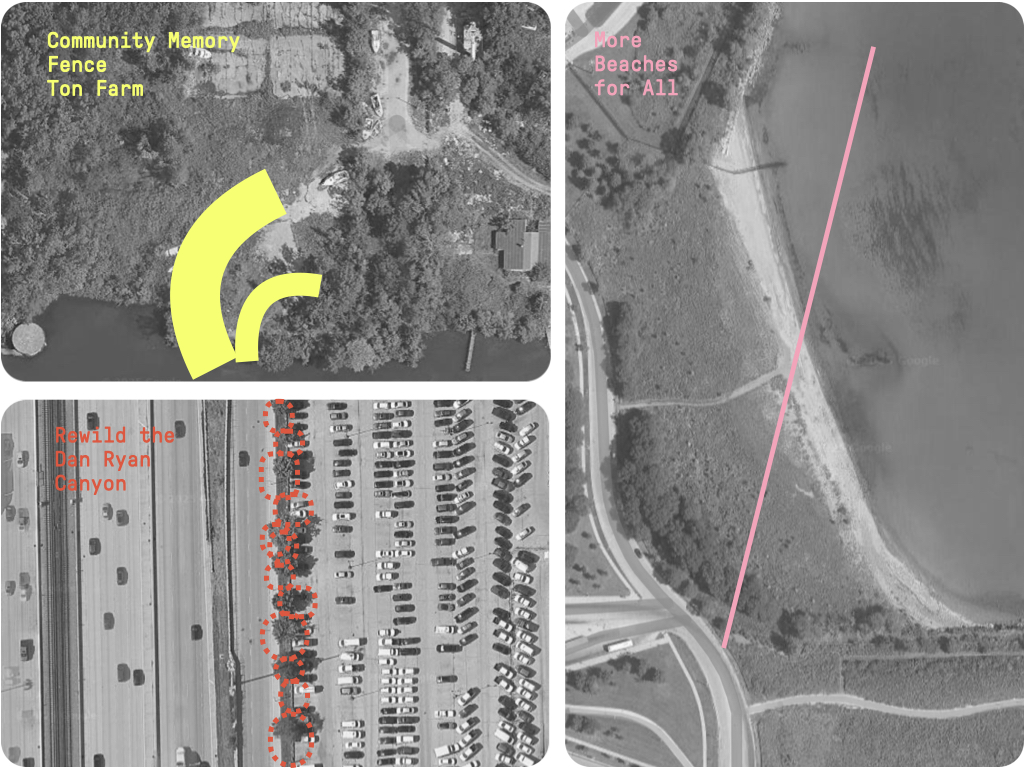



DIY Flatpack Prairie Creatures
Location:
Boswell Harvest Fest 2025
Boswell, Indiana
Initial exploration and youth activity focused on the tall grass prairie.
Boswell, Indiana
Initial exploration and youth activity focused on the tall grass prairie.
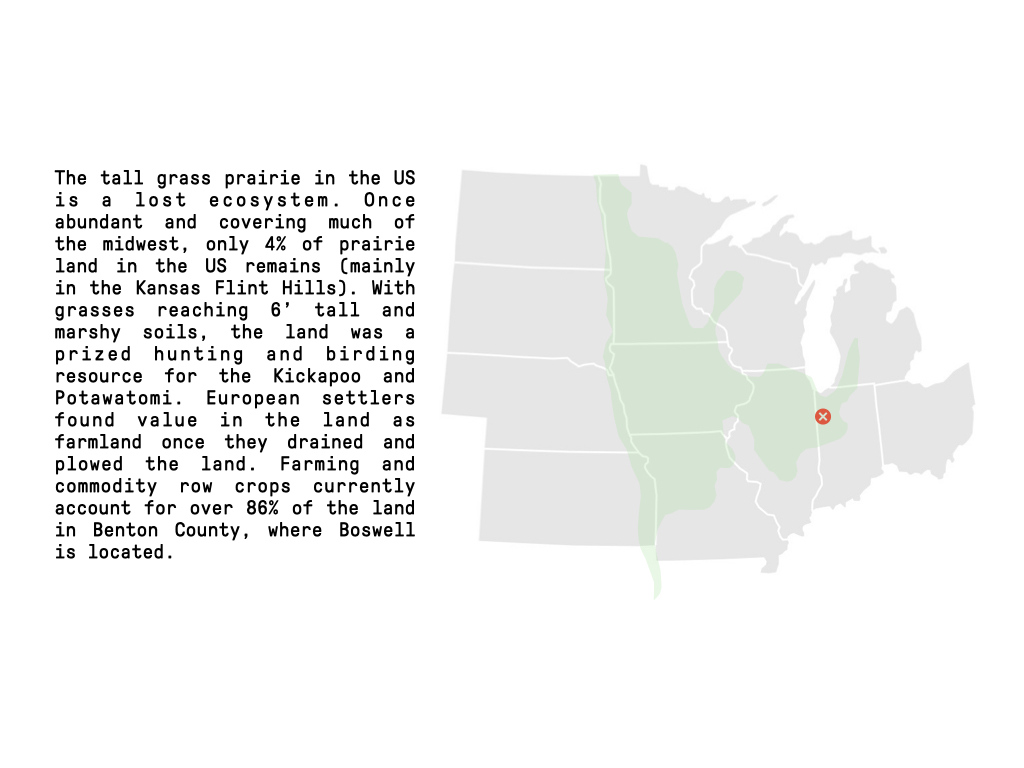
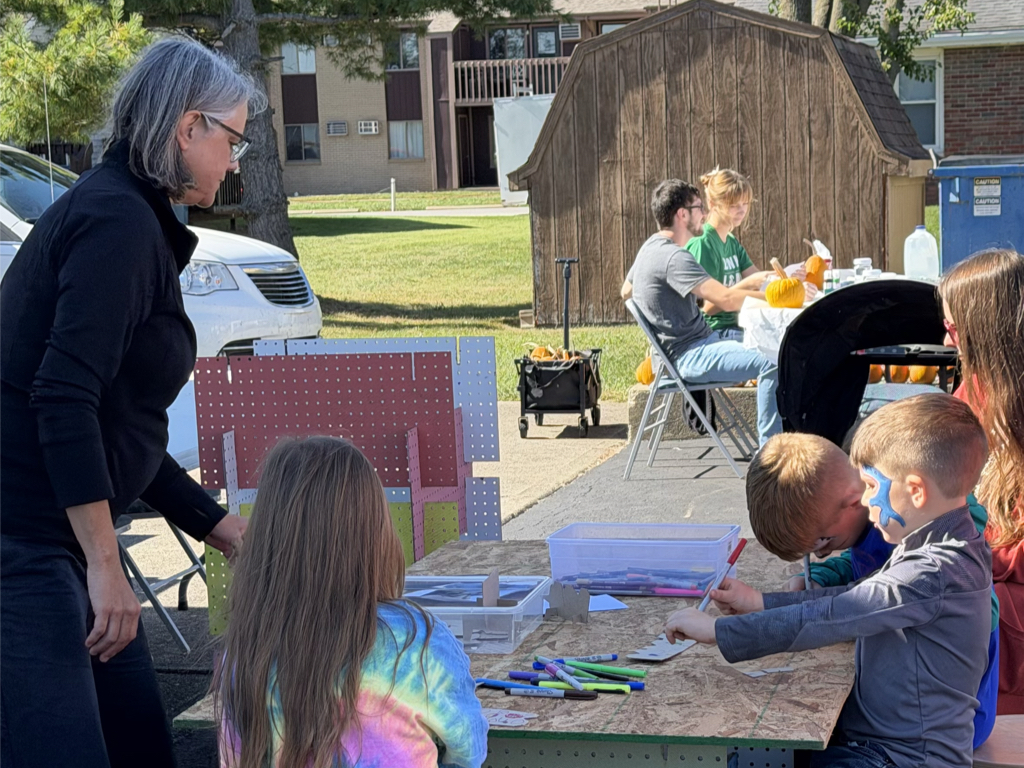
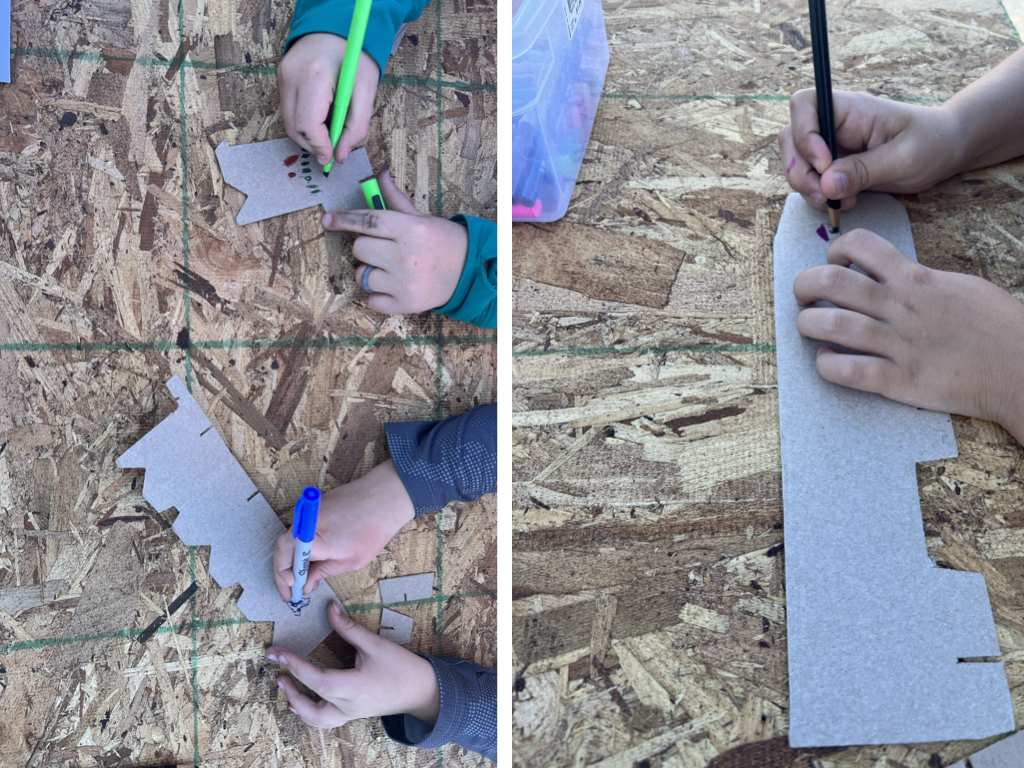




Rural Witnesses Exhibit
Location:
701CCA Gallery with Partners of Place
Columbia, South Carolina
Exhibit participant and lecture. Envisioning concepts of geographical equity along the rail line in Boswell, Indiana.
Columbia, South Carolina
Exhibit participant and lecture. Envisioning concepts of geographical equity along the rail line in Boswell, Indiana.

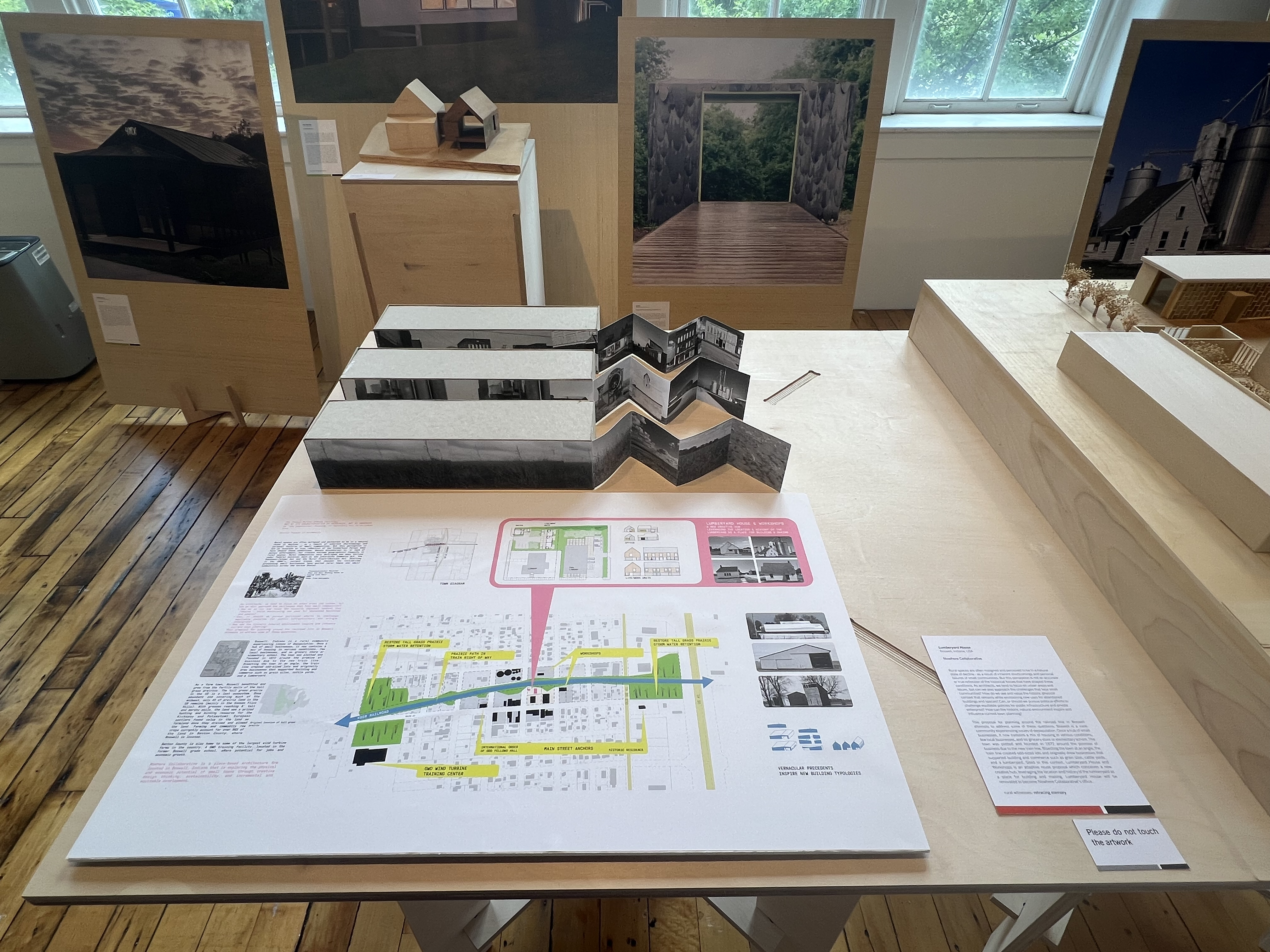
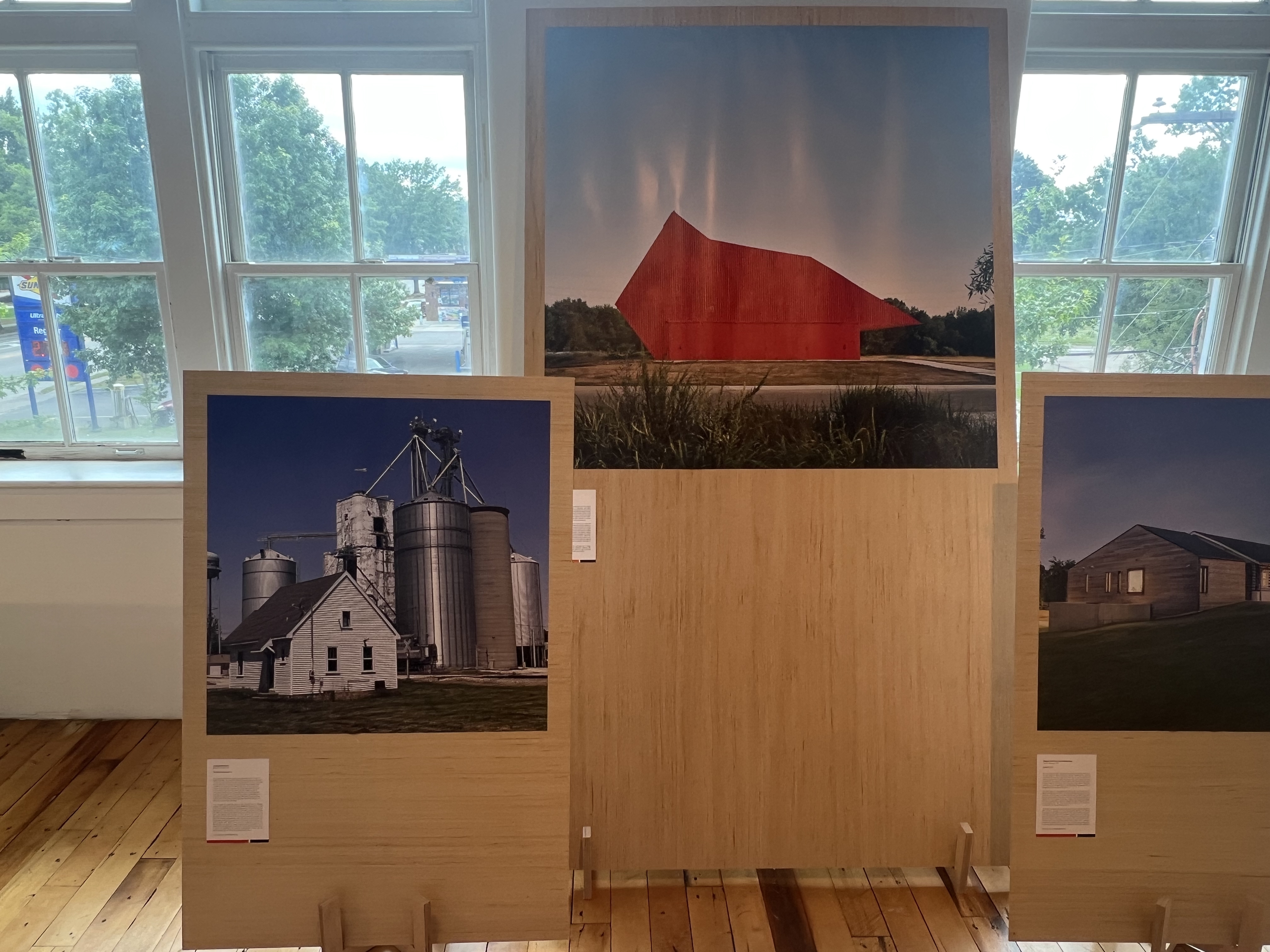
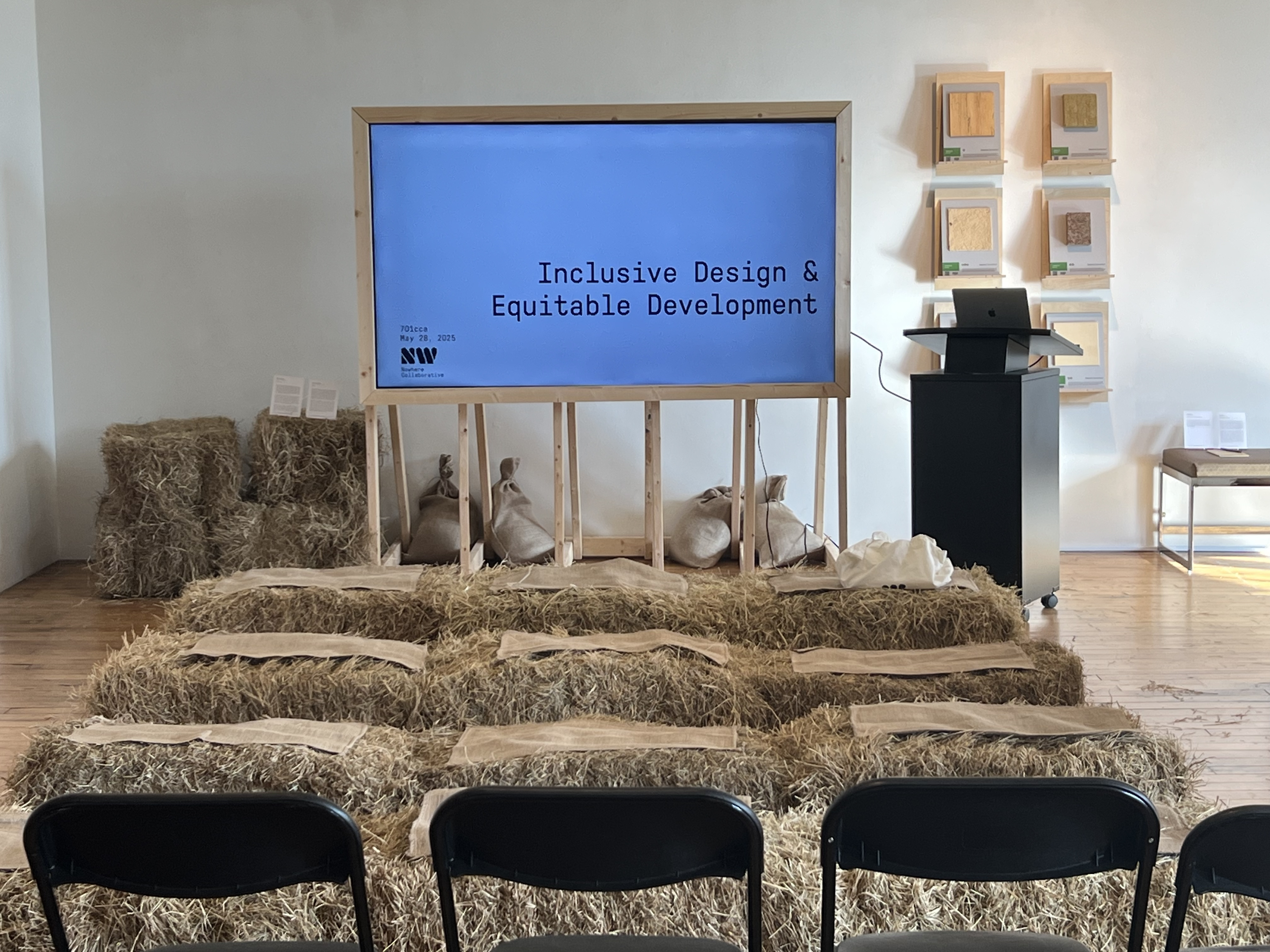
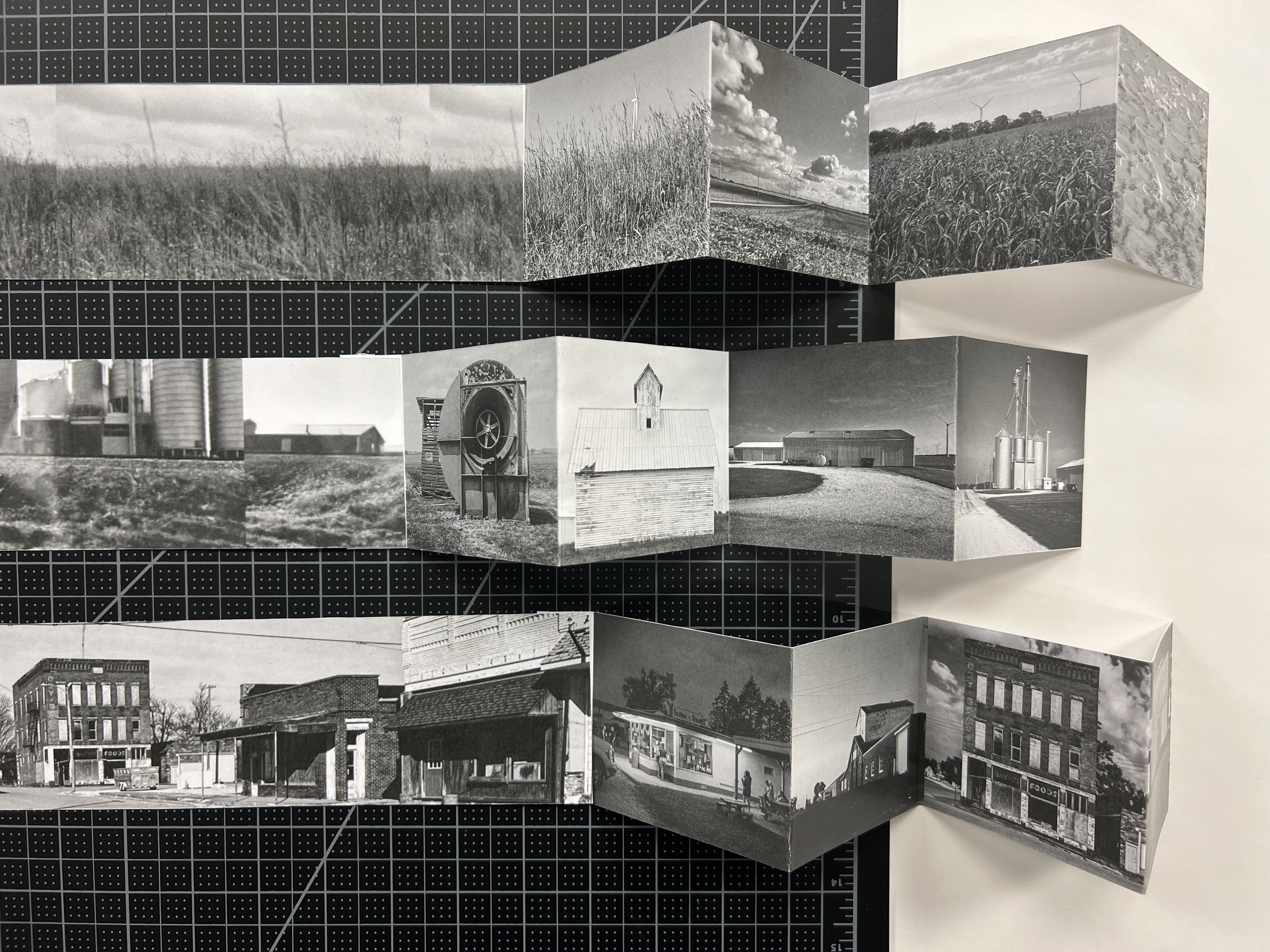
Equitable Development Framework
Location:
Boswell, Indiana
Originating from concepts within AIA’s Framework for Equitable Development, this spatial study anaylized how several project sites in the town of Boswell could cohesively address development issues - with the overall goal of strengthening the town fabric and amplifying or supporting each development entity.
Originating from concepts within AIA’s Framework for Equitable Development, this spatial study anaylized how several project sites in the town of Boswell could cohesively address development issues - with the overall goal of strengthening the town fabric and amplifying or supporting each development entity.
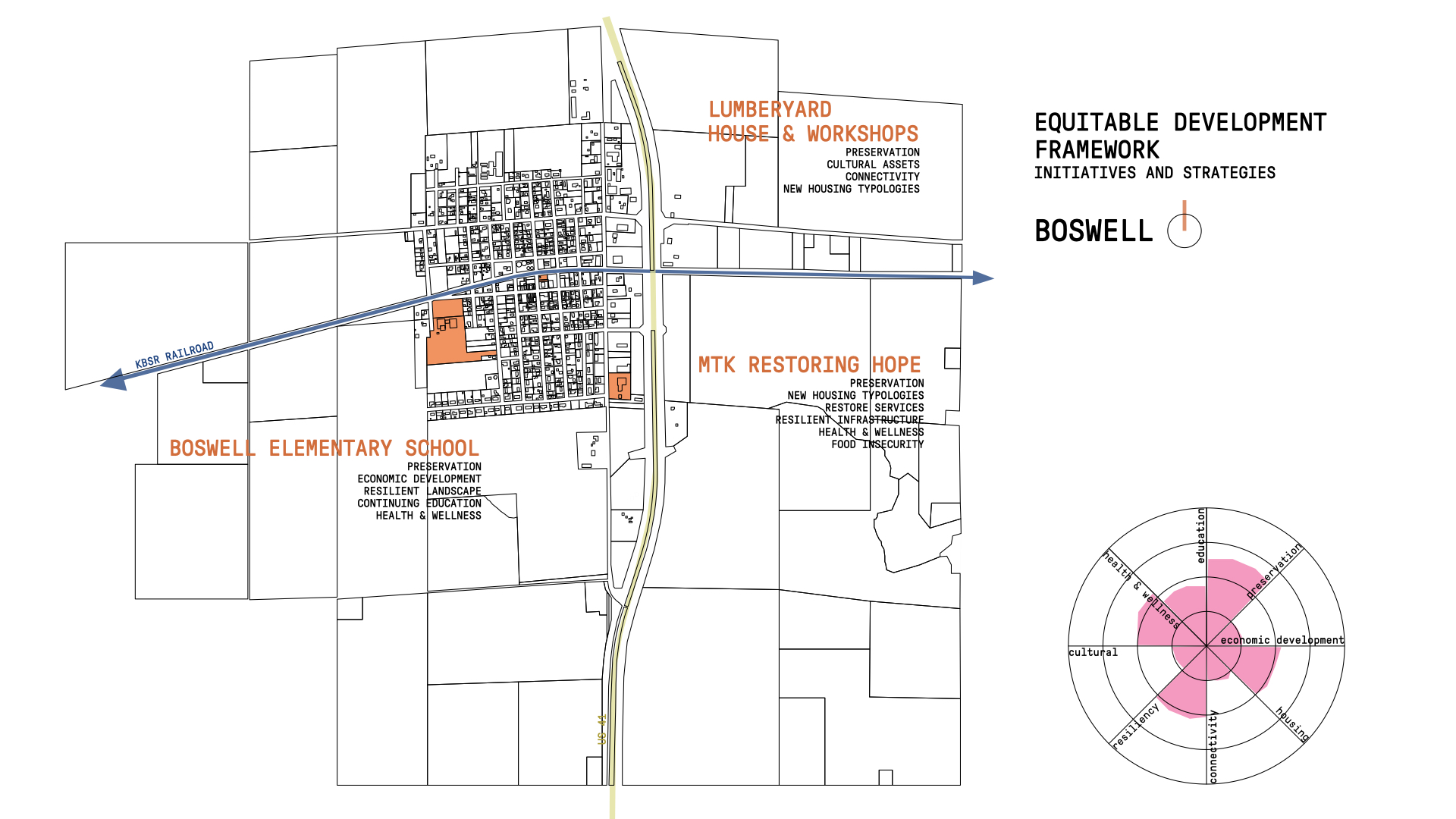
Historic Report for Prairie Preservation Guild w/ Indiana Landmarks
Location:
Fowler, Indiana
Historic building assessment of the Benton County Jail and Sheriff’s Residence.
Constructed in 1876, the historic Benton County Jail and Sheriff’s Residence is currently facing imminent demolition. Since its construction, the building has continuously served as a sheriff’s residence, jail facility, storage for county records, and as the Benton County Tourism Bureau through 1997 when a new jail facility was built and the existing building was vacated.
Historic building assessment of the Benton County Jail and Sheriff’s Residence.
Constructed in 1876, the historic Benton County Jail and Sheriff’s Residence is currently facing imminent demolition. Since its construction, the building has continuously served as a sheriff’s residence, jail facility, storage for county records, and as the Benton County Tourism Bureau through 1997 when a new jail facility was built and the existing building was vacated.
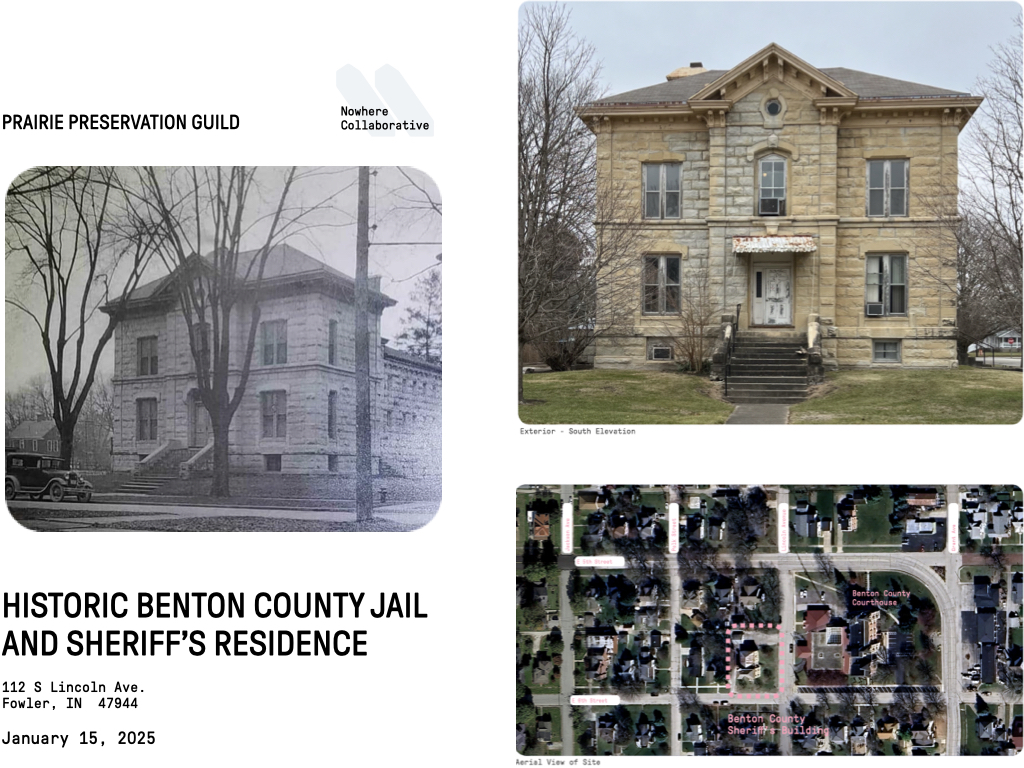
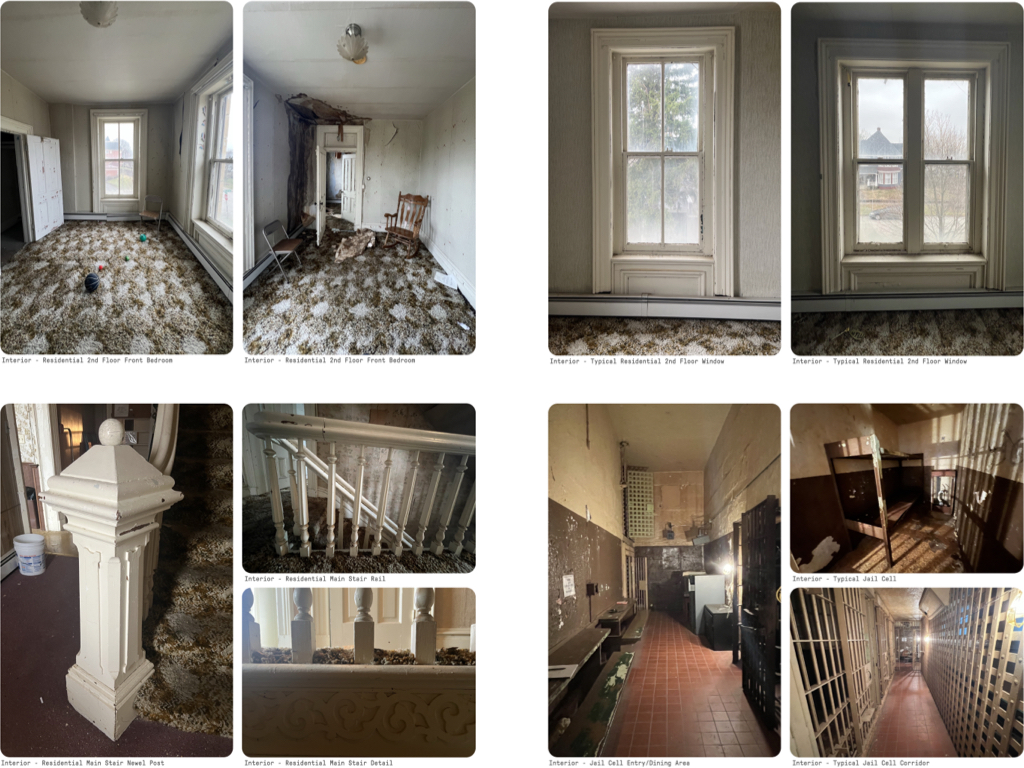
CIRD Local Design Workshop 2023-24 (Citizens’ Institute on Rural Design)
Location:
Boswell, Indiana
J.O.B.S. Renewable Fund partnered with NW Collab to pursue a grant with CIRD to reimagine uses for the recently closed Boswell Elementary School. The Citizens’ Institute on Rural Design (CIRD) is a leadership initiative of the National Endowment for the Arts in partnership with the Housing Assistance Council with design support from To Be Done Studio. Focusing on communities with populations of 50,000 or less, CIRD’s goal is to enhance the quality of life and economic viability of rural America through planning, design, and creative placemaking. CIRD is intended to empower local citizens to capitalize on unique local and regional assets to guide the civic development and future design of their communities.
In 2021, Boswell Elementary the local elementary school, closed due to consolidation. However, local citizens want to maintain the community connections that the school once fostered while bringing new opportunities to the town of 696 people. The current property owner, a long-time Boswell resident, aspires to transform the property into an inspiring and active campus, revitalizing the site as an anchor with robust community services. CIRD’s local design workshop in Boswell engaged residents in envisioning the former school and its surrounding 6 acres of land as a hub for community life, new workforce housing, and job training that could revitalize the town for sustainable, long-term growth.
The local project team embarked on a comprehensive engagement process, building community support through local events and community leadership meetings several months before the workshop. These early engagement activities focused on gathering resident input, building trust, and generating community enthusiasm for the project’s potential. This inclusive approach ensured that all stakeholders, community members, focus group members, and municipal and county staff had a voice and could contribute their ideas on the types of community use they would like to see on the site.
Currently, half of the interior building space of the old Boswell Elementary school building is actively used by Auxilius Renewable Energy, a wind turbine service and job training company. The company CEO and property owner, TJ O’Malley, sought CIRD assistance to reimagine the building and site to engage and support the entire community. His vision is not just for Boswell, but for the repurposing of the school building and site to serve as a prototype for adaptive reuse of buildings in other rural communities. This ambitious vision, in collaboration with the local project team, led to the development of workshop activities to inform conceptual design rendering of the complex.
Read the full report here:
Boswell Elementary School: Reimagined
J.O.B.S. Renewable Fund partnered with NW Collab to pursue a grant with CIRD to reimagine uses for the recently closed Boswell Elementary School. The Citizens’ Institute on Rural Design (CIRD) is a leadership initiative of the National Endowment for the Arts in partnership with the Housing Assistance Council with design support from To Be Done Studio. Focusing on communities with populations of 50,000 or less, CIRD’s goal is to enhance the quality of life and economic viability of rural America through planning, design, and creative placemaking. CIRD is intended to empower local citizens to capitalize on unique local and regional assets to guide the civic development and future design of their communities.
In 2021, Boswell Elementary the local elementary school, closed due to consolidation. However, local citizens want to maintain the community connections that the school once fostered while bringing new opportunities to the town of 696 people. The current property owner, a long-time Boswell resident, aspires to transform the property into an inspiring and active campus, revitalizing the site as an anchor with robust community services. CIRD’s local design workshop in Boswell engaged residents in envisioning the former school and its surrounding 6 acres of land as a hub for community life, new workforce housing, and job training that could revitalize the town for sustainable, long-term growth.
The local project team embarked on a comprehensive engagement process, building community support through local events and community leadership meetings several months before the workshop. These early engagement activities focused on gathering resident input, building trust, and generating community enthusiasm for the project’s potential. This inclusive approach ensured that all stakeholders, community members, focus group members, and municipal and county staff had a voice and could contribute their ideas on the types of community use they would like to see on the site.
Currently, half of the interior building space of the old Boswell Elementary school building is actively used by Auxilius Renewable Energy, a wind turbine service and job training company. The company CEO and property owner, TJ O’Malley, sought CIRD assistance to reimagine the building and site to engage and support the entire community. His vision is not just for Boswell, but for the repurposing of the school building and site to serve as a prototype for adaptive reuse of buildings in other rural communities. This ambitious vision, in collaboration with the local project team, led to the development of workshop activities to inform conceptual design rendering of the complex.
Read the full report here:
Boswell Elementary School: Reimagined

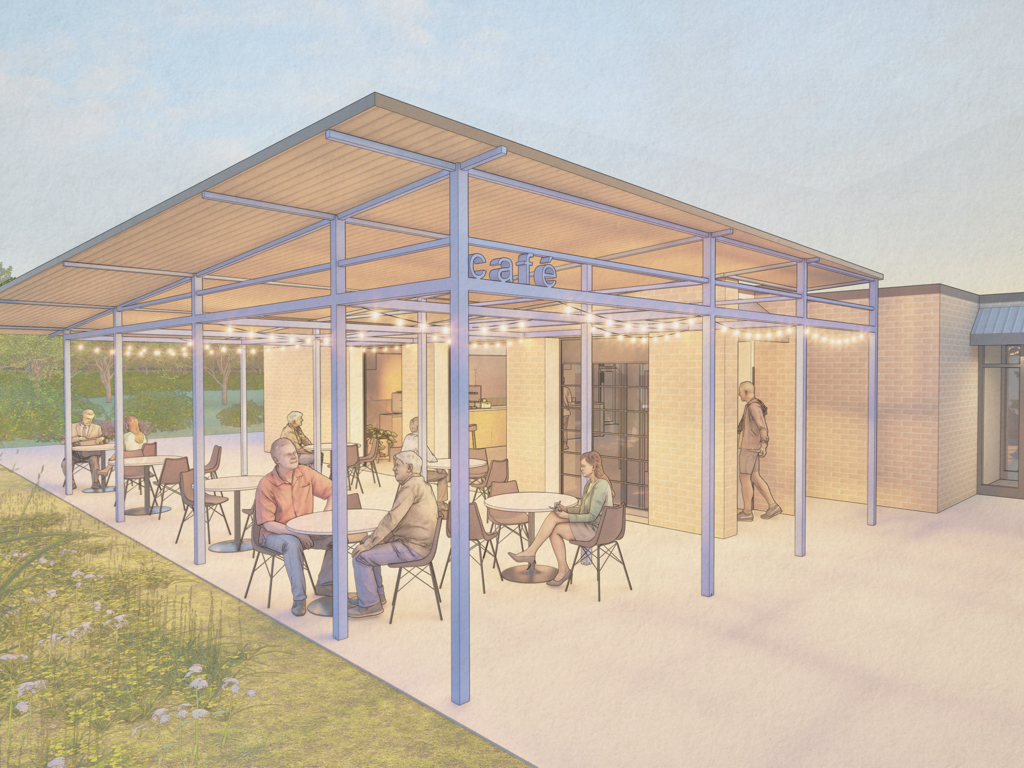
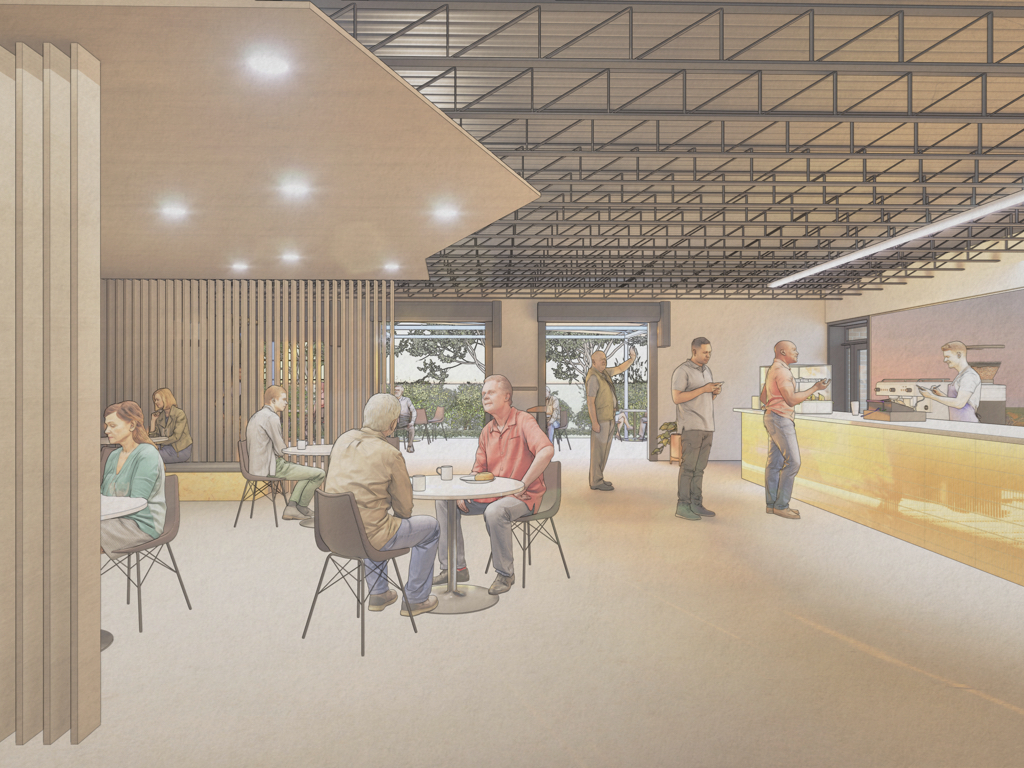
Architecture Scavenger Hunt
Location:
Boswell, Indiana
The architecture scavenger hunt was developed as an alternative way to experience and “see” the existing town fabric of Boswell, Indiana. The small downtown area contains many vacant historic buildings that are in various stages of decline. Overall, the collection of buildings projects a sense of loss and abandonment. By searching for and finding the building details, participants are encouraged to see historic value and craftmanship in the existing building fabric.
This activity works best as a structured event with teams of participants. Ideally, a local guide would be included on each team who can provide historical insight into the past or historical use of the buildings.
The architecture scavenger hunt was developed as an alternative way to experience and “see” the existing town fabric of Boswell, Indiana. The small downtown area contains many vacant historic buildings that are in various stages of decline. Overall, the collection of buildings projects a sense of loss and abandonment. By searching for and finding the building details, participants are encouraged to see historic value and craftmanship in the existing building fabric.
This activity works best as a structured event with teams of participants. Ideally, a local guide would be included on each team who can provide historical insight into the past or historical use of the buildings.
